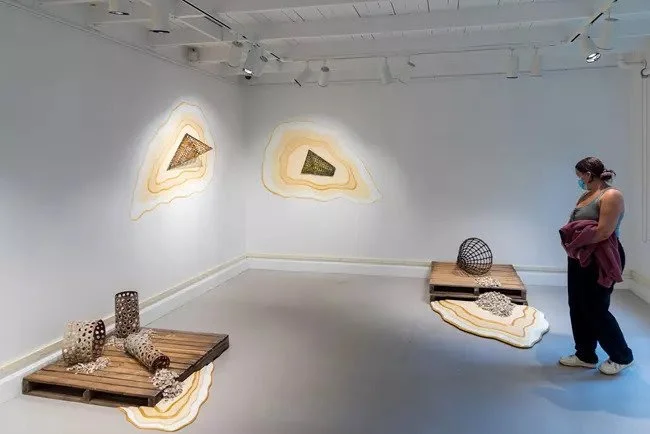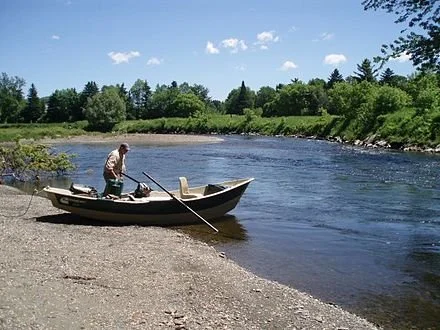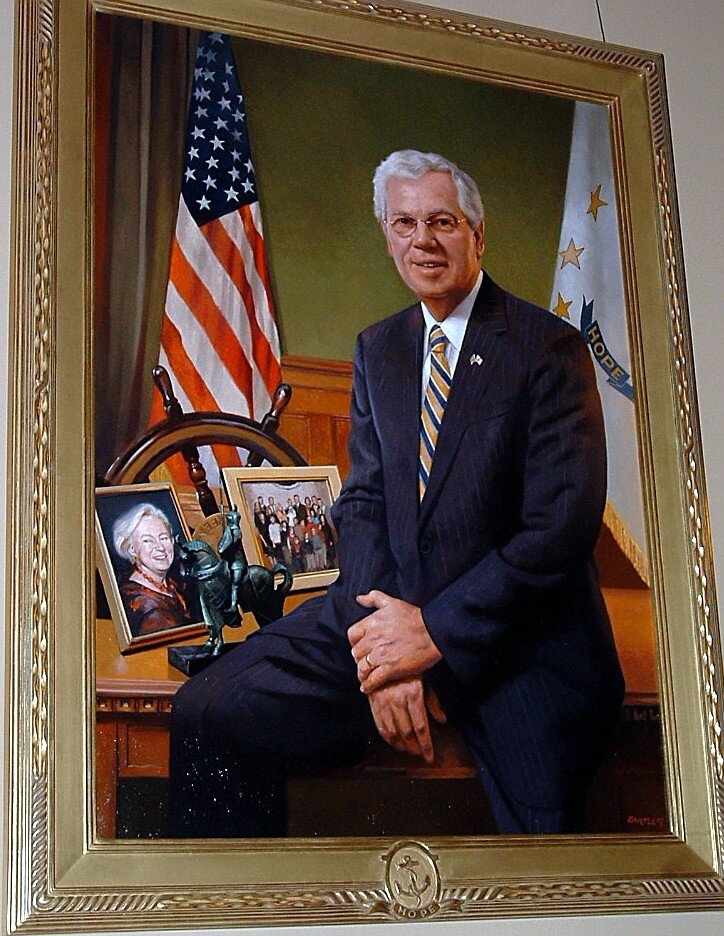A visitor walks through work in the group show "One River, Many Views," at Saint-Gaudens National Historical Park, in Cornish, N.H., through Oct. 30.
— Photo Courtesy Saint-Gaudens National Historical Park
The park says:
“One River, Many Views’’ features the work of Nancy Diessner (Mass.), Brenda Garand (N.H.), and Janet Pritchard (Conn.), whose work responds to the Connecticut River’s beauty, its power and its history. These artists work in a variety of media, including photography, drawing, printmaking and sculptural forms, at times using the river water, its soil and its flora as part of their art-making process. In addition to the artwork, the show features commissioned wall labels written by 10 members of the Upper Valley community who live in, work in and otherwise engage with the Connecticut River. These include creative writers, scholars and simply residents, as well as those from the indigenous, agricultural, recreational and other communities for whom the river is an important part of their daily lives. Their responses – reflective, celebratory, or interrogatory — will highlight the diverse natural and cultural histories and relationships with this imposing body of water. The exhibition seeks to encourage discussion as well as awareness of the ways that one topic can hold multiple approaches, opinions, expertise, and experiences.’’
Drift boat fishing guide preparing to work the river near Colebrook, N.H.
































